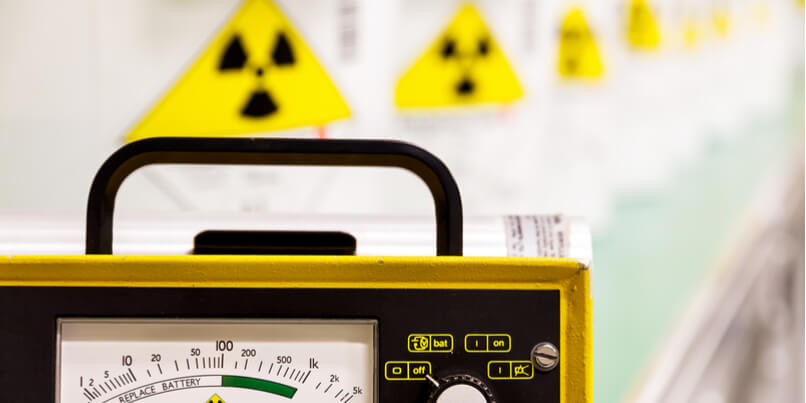 The creation of realistic training scenarios is vital in ensuring that military crews and first response teams are prepared and equipped to handle actual detectors in real-life radiation incidents and that industrial operatives are practiced in their respective monitoring activities.
The creation of realistic training scenarios is vital in ensuring that military crews and first response teams are prepared and equipped to handle actual detectors in real-life radiation incidents and that industrial operatives are practiced in their respective monitoring activities.
Radiation training exercises that are rooted in applied learning techniques can be an invaluable tool in enabling trainees to read and understand changes in units of measurement, to relay their findings up the chain of command and, above all, to stay safe.
With any form of simulation used for CBRNe or hazmat training however, there will inevitably be some compromises as we balance our desired training outcomes against the practicality of creating realistic scenarios and the overall cost of implementation.
In previous blog posts we’ve written about the value of simulators for a wide variety of hands-on CBRNe and hazmat training scenarios.
In this blog post we discuss the unique challenges that realistic radiation safety training can present. And we explore some of the compromises that may inevitably need to be made in ensuring the desired training outcomes are achieved.
Scenarios
When constructing realistic radiation safety training scenarios, a first element to consider is the nature of the source that you wish to simulate. Is the source, for example:
- Contaminant simulating contamination/decontamination of people or surfaces?
- Directional or isotropic?
- Fixed or mobile (ie being carried by a person or vehicle?)
- Representing a medical or industial radionuclide?
- Designed to simulate the effects of single or multiple radionuclides?
- A simulation of radioactive fallout due to a plume?
- A Radiological Dispersion Device (RDD), also known as a “dirty bomb?"
- A specialist improvised/non-improvised weapon scenario?
Simulating radioactive contaminants
Ionizing radiation behaves as it does due to the portion of the electromagnetic spectrum in which it exists and the nature of the source (whether it be a single isotropic or directional emitter, or contamination in the form of fallout or liquid particles.) The dynamic ranges associated with radiation readings can also be extremely large.
Current options for the simulation of radioactive contamination include:
- The placing of powders or liquid substances that represent an actual contaminant
- Hiding a safe item underneath a surface such as clothing or a protective suit
- Simulating contamination through a virtual means, using a combination of GPS and distance measurement
The above methods can all be advantageous in simulating cross-contamination or for teaching the handling of open sources in a laboratory environment.
The simulation of Gamma and high-energy Beta emitters however, presents a different set of challenges.
Shielding
Inserting an appropriate shield between an individual and a radiation source can significantly reduce, and in some cases even eliminate, the dose received.
Solid or liquid materials such as lead, concrete and water can all act as shields to absorb the energy of radiation. The degree of shielding that a material provides depends both on the specific qualities of that material and the function of the energy concerned.
While it’s possible to use technology to determine the relative position of (and distance between) a simulation source and a simulation meter, the ability to demonstrate the effects of shielding can require some imaginative approaches.
The reality is that safe alternatives can never be subjected to the same degree of attenuation (the reduction in force or effect) as actual radiation.
Understanding shielding is vital for radiation safety training, however the degree of realism required may well vary depending on the operational responsibilities of the trainee and the type of lesson being delivered.
What is important is that the effects of shielding are adequately represented for your training purposes.
Instructor Intensiveness
Finally too, it’s important to bear in mind that some current radiation safety training methods can be very instructor-intensive.
If, for example, the training technique requires the temporary placement of a simulated radioactive presence, then an instructor may find themselves more focused on creating the “effect” than on observing and responding to their students.
The creation of realistic, safe and repeatable training exercises for radiation safety training can have a crucial role to play in ensuring efficient and effective response to a radiological incident.
While this may mean certain compromises in terms of the specific physical representations that can be created, ultimately hazmat instructors will want to consider what it is they wish their trainee to experience as a result of the exercise.
In clarifying your training objectives you can ensure you utilize the most appropriate technology and achieve the desired results.
